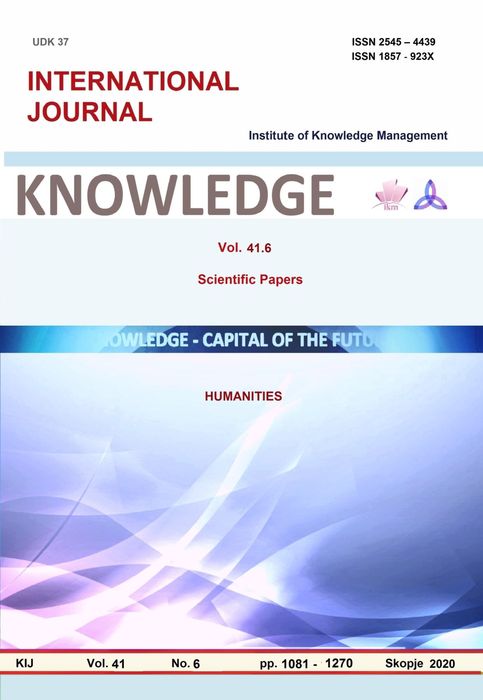MEASUREMENT AND DEVELOPMENT OF IRREGULAR PULSES IN THE MUSICAL CULTURE AND FOLKLORE REPERTOIRE OF SOME NATIONALITIES
MEASUREMENT AND DEVELOPMENT OF IRREGULAR PULSES IN THE MUSICAL CULTURE AND FOLKLORE REPERTOIRE OF SOME NATIONALITIES
Author(s): Marian AngelovSubject(s): Anthropology
Published by: Scientific Institute of Management and Knowledge
Keywords: irregularity; metro-rhythm; metric beats; time signatures
Summary/Abstract: The current paper leverages historical and theoretical research and systematisation of texts from a number of valuable research works and sources, the overall purpose of which is to review and analyse concepts regarding the theoretical aspects, spread, development and interpretation of irregular pulses in the Bulgarian musical culture, and of the music of some nationalities and foreign composers, as a result of which relevant conclusions and summaries will be drawn. The paper reports on historical and theoretical aspects of the specificity, spread and development of irregular pulses in Bulgarian and foreign music that characterise these metro-rhythmic forms as unique and phenomenal. Irregularity is a phenomenon that Bulgarian folklore studies (and probably also the musical folklore of other peoples) use in the area of metro-rhythm - the unity between rhythm and metre and its basic organising function in musical art. According to some researchers, the emergence of similar metro-rhythmic structures should be regarded as the result of the influences of Asian and European culture in the 7th c. A.D. Generally, such pulses are almost extraneous and quite scarce to world music. Folklorists, musicologists and composers who have dealt with irregular metro-rhythms share the opinion that in terms of their diversity, complexity and variations they are most widely prevalent in Bulgarian musical works. The Hungarian composer, pianist and ethnomusicologist Béla Bartók used to call the irregular metro-rhythms ―Bulgarian rhythm‖ because in his opinion they had been initially singled out by Bulgarian musical scholars. The works of the Bulgarian composer and researcher Dobri Hristov are considered as the main prime sources for the professional interpretation of irregular metro-rhythms in Bulgaria. Through the examples pointed out in them, different assumptions are made as to their place of occurrence, who they were inherited from and how these musical metric forms originated. One of the specificities that single out Bulgarian irregular pulses from the metro-rhythm of melodies with complex compound time signatures of other nationalities and composers is the fast tempo of the metric beats (thus, counting them becomes inconvenient, even impossible), and the need to group them in short (duple beat) and long (triple beat) sections (time signatures). In such cases one has to count and beat time not of individual beats of the time signature, but of whole simple time signatures within a compound time signature. In Bulgarian music, however, irregular metro-rhythms are phenomenal on account of their huge spread, diversity, complexity and variations - there are patterns of larger number of metric elements (exceeding 15). In western music (and not only there), such types of time signatures are most often interpreted as complex and compound as the tempo of melodies allows for motional response to each of the metric beats. Nowhere else but in Bulgarian music, both of folk origin or composed pieces, have irregular metro-rhythms been represented in such a diversity of combinations and variants.
Journal: Knowledge - International Journal
- Issue Year: 41/2020
- Issue No: 6
- Page Range: 1113-1117
- Page Count: 5
- Language: English

